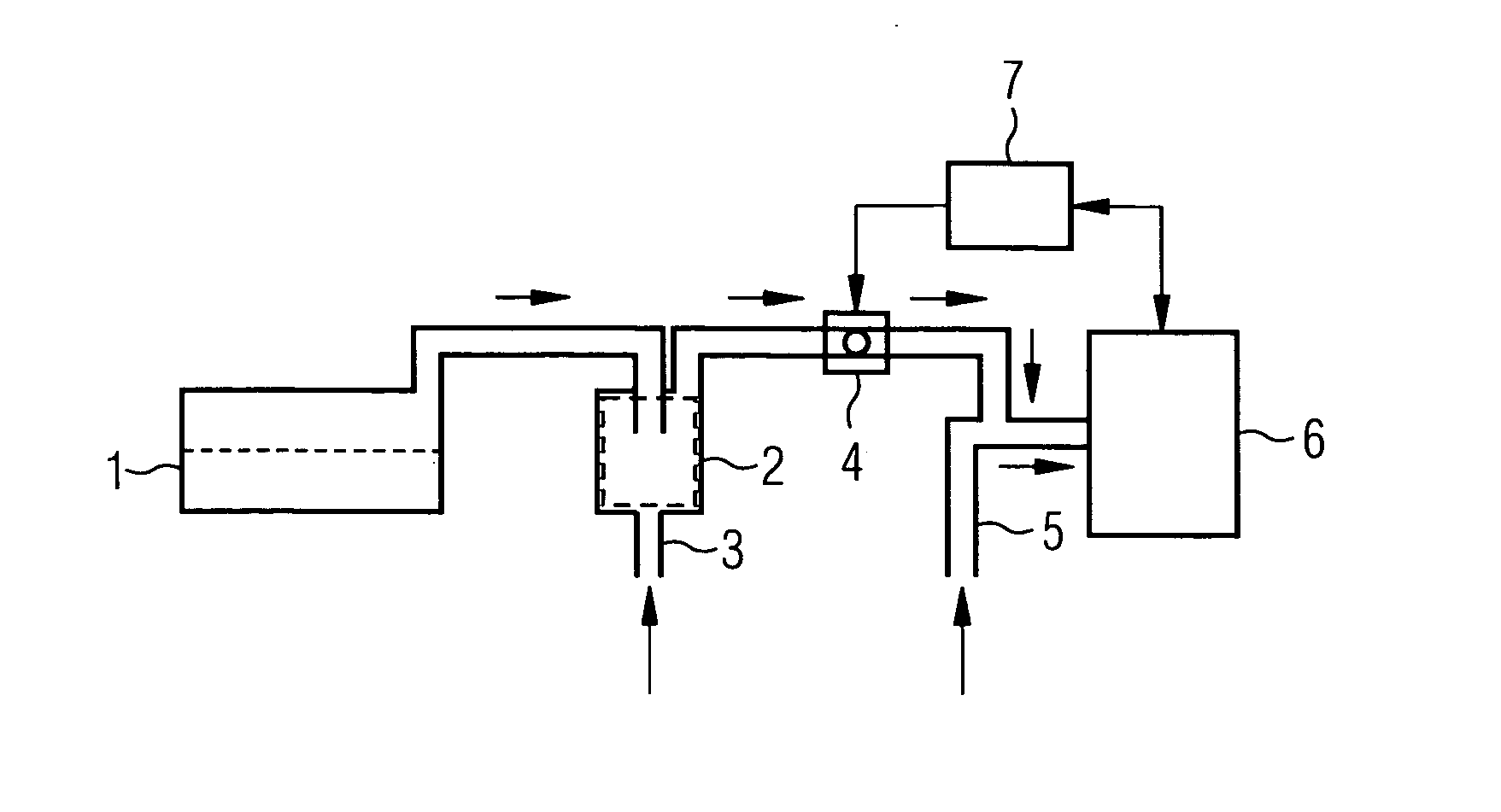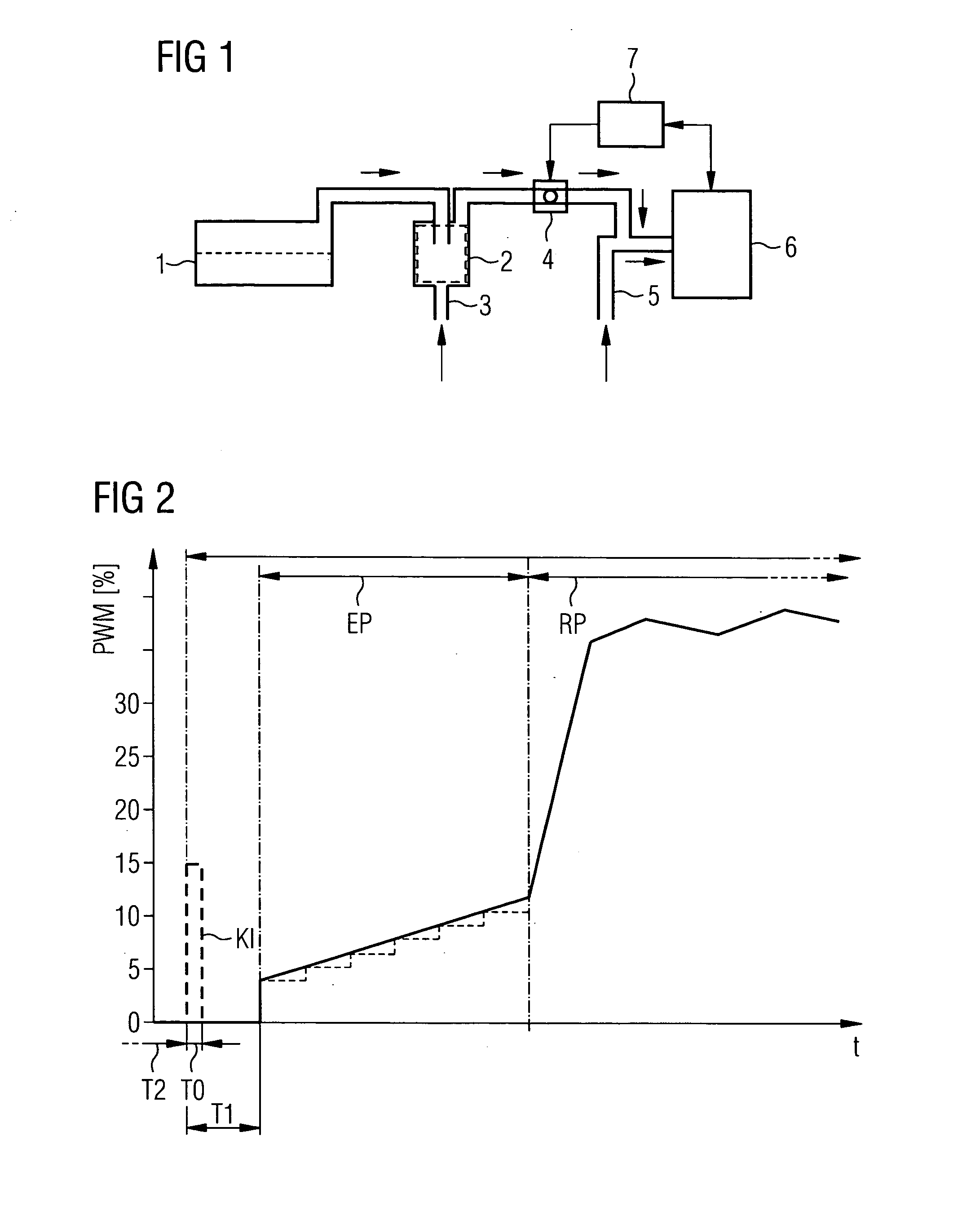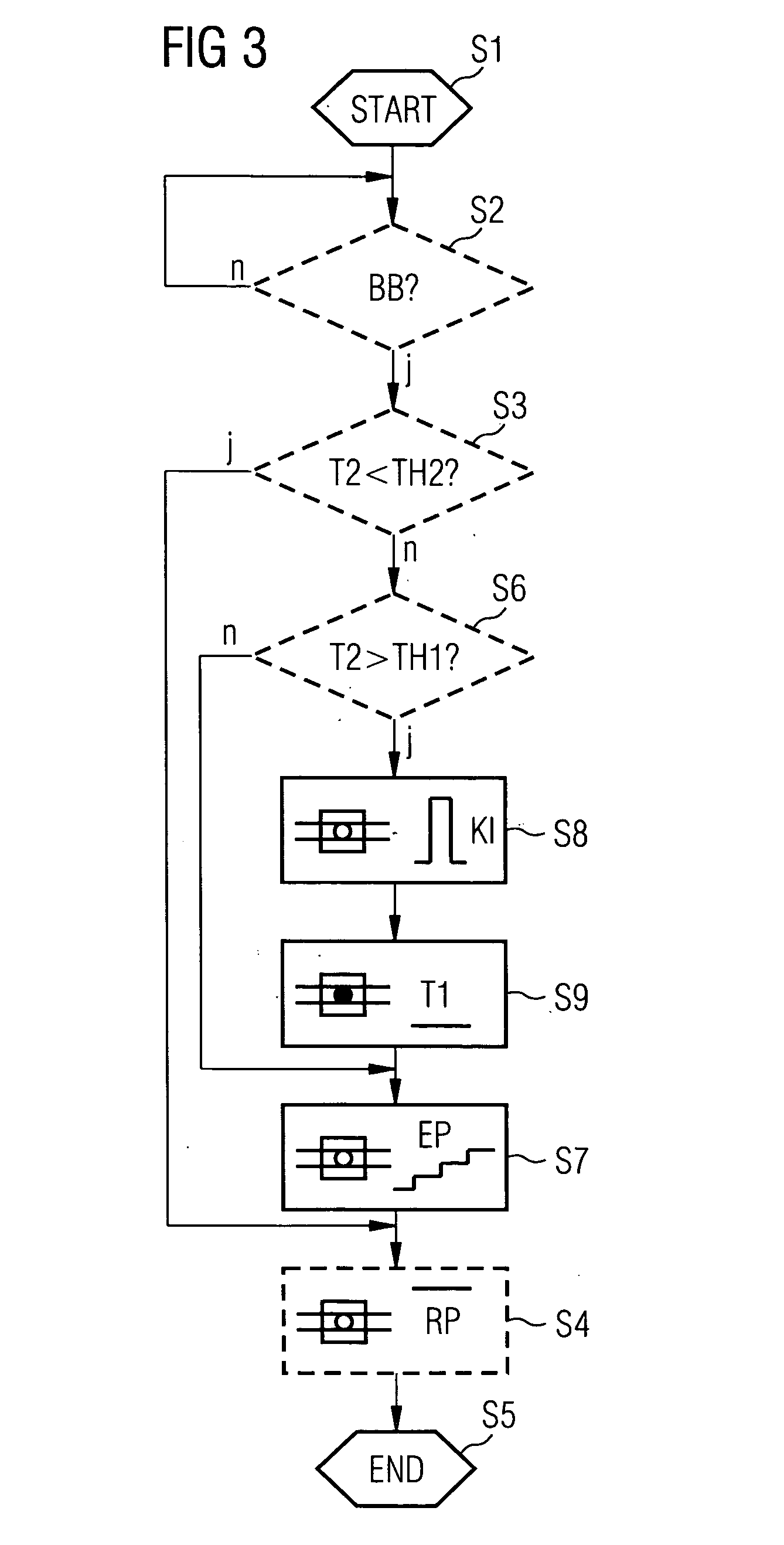Method and device for activating a valve of a fuel vapor retention system
a fuel vapor retention and valve activation technology, which is applied in the direction of domestic cooling devices, electric control, instruments, etc., can solve the problems of increasing pollutant emissions and affecting so as to improve the opening behavior of the valve, reduce or prevent the effect of disturbance in the operation of combustion engines
- Summary
- Abstract
- Description
- Claims
- Application Information
AI Technical Summary
Benefits of technology
Problems solved by technology
Method used
Image
Examples
Embodiment Construction
[0014] A fuel vapor retention system comprises a fuel vapor retention filter 2 with a fresh-air feed 3 and a valve 4 (FIG. 1). The fuel vapor retention filter 2 is coupled to a fuel tank 1 on the input side. Fuel vapor that collects in the fuel tank 1 due to evaporation of the fuel in the fuel tank 1 is fed to the fuel vapor retention filter 2. The fuel vapor retention filter 2 displays a storage medium for fuel vapor which comprises e.g. activated carbon. The fuel vapor retention filter 2 is coupled on the output side, via the valve 4, to a suction pipe 5 of a combustion engine 6.
[0015] Furthermore, a control unit 7 is provided that is coupled to the valve 4 and that is configured to feed a control signal to said valve for opening and closing the valve 4. The control signal is, for example, pulse-width modulated and a PWM value of the control signal is predefined by an associated pulse width. However, the control signal can also be configured differently.
[0016] The control unit 7...
PUM
 Login to View More
Login to View More Abstract
Description
Claims
Application Information
 Login to View More
Login to View More - R&D
- Intellectual Property
- Life Sciences
- Materials
- Tech Scout
- Unparalleled Data Quality
- Higher Quality Content
- 60% Fewer Hallucinations
Browse by: Latest US Patents, China's latest patents, Technical Efficacy Thesaurus, Application Domain, Technology Topic, Popular Technical Reports.
© 2025 PatSnap. All rights reserved.Legal|Privacy policy|Modern Slavery Act Transparency Statement|Sitemap|About US| Contact US: help@patsnap.com



